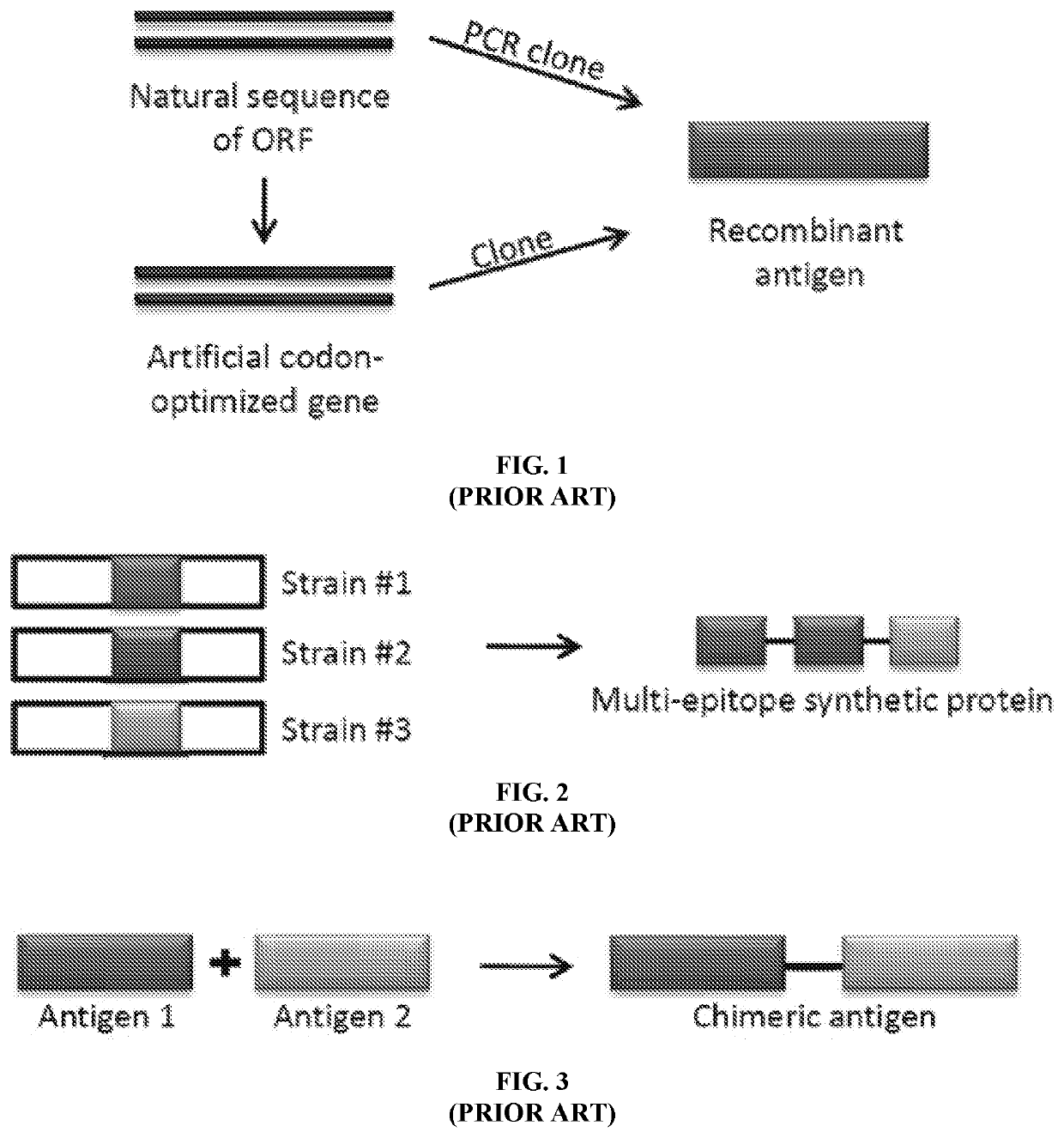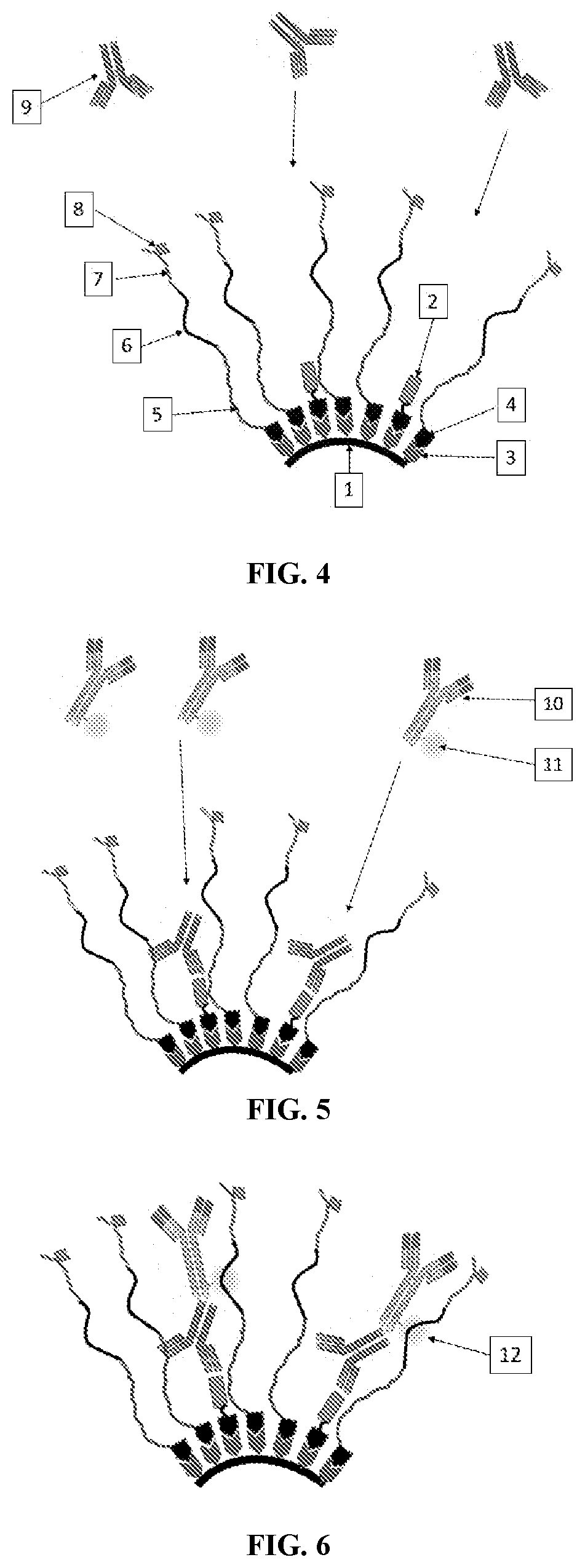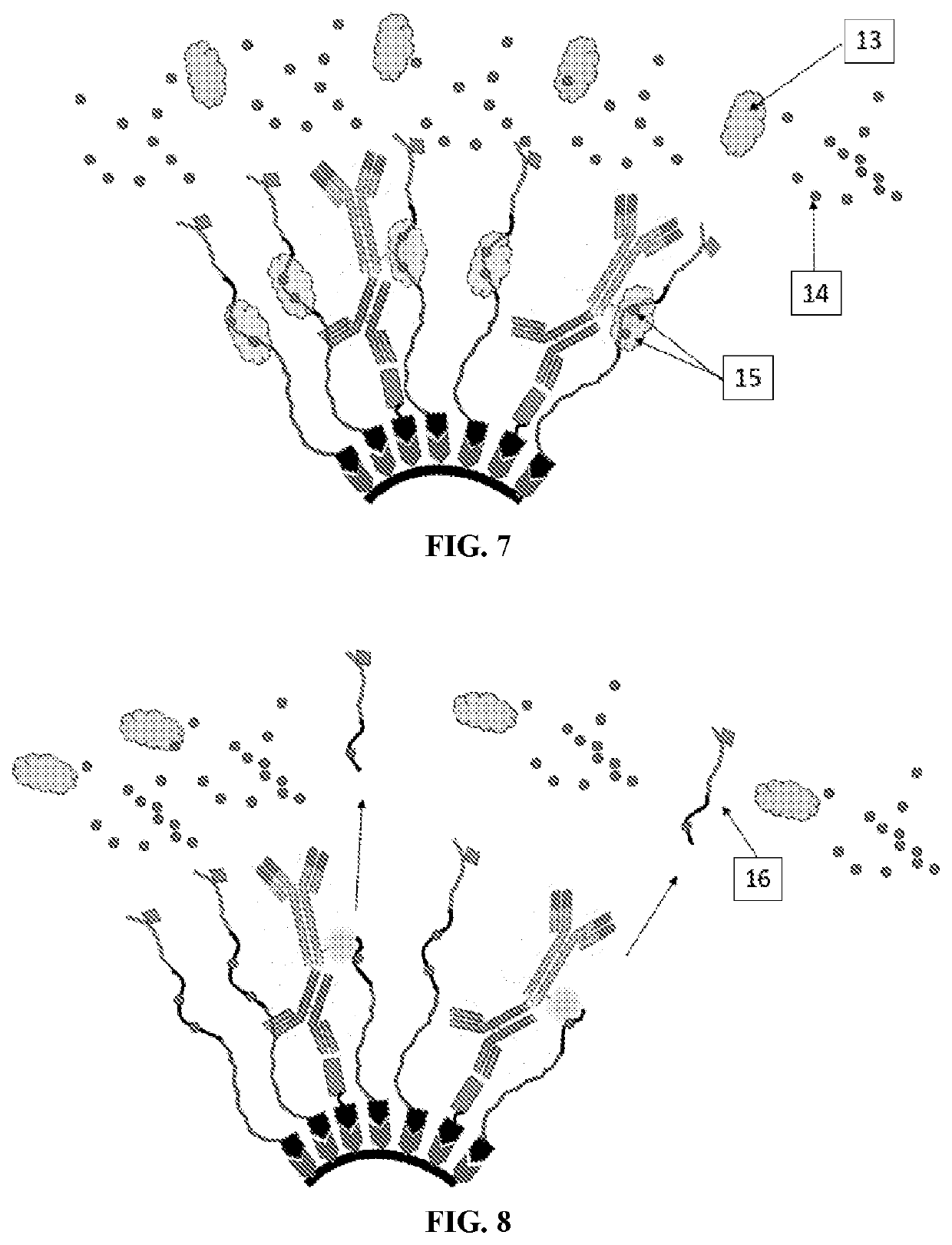Controlled Generation of Measurable Signals and Uses Thereof
a technology of measurable signals and control signals, which is applied in the direction of measurement devices, laboratory glassware, instruments, etc., can solve the problems of inability to detect quickly, corrupt sample quality, and require skilled sample collection, storage and transportation of sample,
- Summary
- Abstract
- Description
- Claims
- Application Information
AI Technical Summary
Benefits of technology
Problems solved by technology
Method used
Image
Examples
example 1
[0121] The detection of HIV infection based the incorporation of multiple epitopes into Thermal Green Protein that serves as the bioengineering core module. The following epitopes were identified as unique to HIV-1 and recognized by antibodies in serum from HIV-1 infected patients:
1.SEQ ID NO: 22PTKAKRRVVQREKP(gp120)2.SEQ ID NO: 23GCSGRLICTTNVPW(gp160)3.SEQ ID NO: 24LLSSWGCKG VCYTSVQWNET(gp41)4.SEQ ID NO: 25LLSLWGCRG VCYTSVQWNET(gp41)5.SEQ ID NO: 26RILAVERYLKDQ(gp41)6.SEQ ID NO: 27RLLGIWGCSGKLICTT(envelope glycoprotein)7.SEQ ID NO: 28RALETLLNQQRLLNSWGCKGRLVCYTSV(gp41)8.SEQ ID NO: 29NTRKSIRIGPGQTFIA(envelope glycoprotein)9.SEQ ID NO: 30RKSVHIGPGQAFYA(pg120)
[0122]Of interest is that epitopes 3 & 4 represent observed polymorphisms that only differ by two amino acids. In addition, the spacer sequences GGSG SEQ ID NO: 31 & GGGASG SEQ ID NO: 32 were included to provide a section of flexibility. Lastly, two proteins are included. The 6-HIS tag that allows purification through immobilized...
PUM
 Login to View More
Login to View More Abstract
Description
Claims
Application Information
 Login to View More
Login to View More - R&D
- Intellectual Property
- Life Sciences
- Materials
- Tech Scout
- Unparalleled Data Quality
- Higher Quality Content
- 60% Fewer Hallucinations
Browse by: Latest US Patents, China's latest patents, Technical Efficacy Thesaurus, Application Domain, Technology Topic, Popular Technical Reports.
© 2025 PatSnap. All rights reserved.Legal|Privacy policy|Modern Slavery Act Transparency Statement|Sitemap|About US| Contact US: help@patsnap.com



